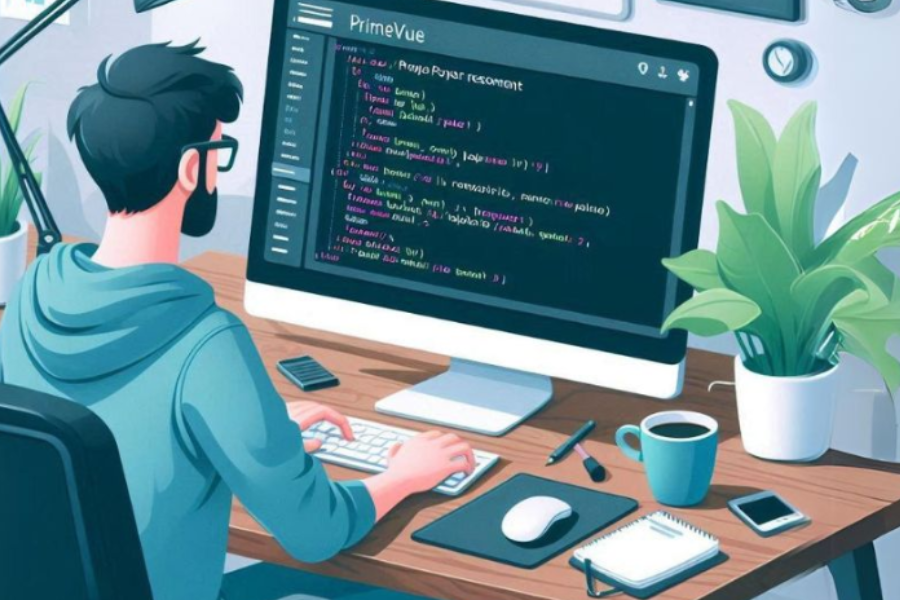Introduction
As a Vue.js developer working with popover component not screen responsive primevue you may encounter challenges while trying to make certain UI components, like the popover component not screen responsive primevue, responsive. Although popover component not screen responsive primevues can be a great tool for displaying contextual information, ensuring they work well across various screen sizes requires a deeper understanding of their functionality. In this guide, we’ll explore how to fine-tune the PrimeVue popover component not screen responsive primevue component for responsiveness. We’ll cover common problems, practical solutions, and essential testing techniques to help you get the best results on mobile and desktop devices.
Understanding the PrimeVue popover component not screen responsive primevue Component
Core Features of the popover component not screen responsive primevue
PrimeVue’s popover component not screen responsive primevue component is a versatile UI element designed to display additional content in a floating overlay. It offers several key features:
- Customizable Positioning: Position the popover component not screen responsive primevue relative to its trigger element based on user-defined parameters.
- Flexible Content: Display diverse content types, such as text, HTML elements, or Vue components.
- Event-based Activation: Triggers can be set for actions like clicks, hover events, or focus.
- Smooth Transitions: Enhance user experience with animation effects when the popover component not screen responsive primevue appears or disappears.

Although PrimeVue’s popover component not screen responsive primevue is equipped with features to handle different screen sizes, issues can arise that hinder its performance on smaller screens or mobile devices. It’s important to address these challenges to maintain a user-friendly experience across various platforms.
Typical Applications
The popover component not screen responsive primevue component can be used in various scenarios:
- Tooltips: Display helpful hints or descriptions on hover.
- Menus: Provide additional navigation or options upon clicking.
- User Actions: Show contextual buttons or actions related to specific items.
- Help Text: Offer extra information for form fields or instructions.
Understanding these applications is crucial when optimizing the component’s behavior, as different use cases may require unique handling for responsiveness.
Common Responsiveness Challenges
While PrimeVue’s popover component not screen responsive primevue comes with default responsive features, developers often face issues when trying to make it work across different devices. Let’s break down some of the most common problems and how you can address them:

A. Mobile and Touch Interaction Issues
On mobile devices, popover component not screen responsive primevues can be challenging due to the following:
- Accidental Dismissals: Users may dismiss the popover component not screen responsive primevue unintentionally.
- Tap Precision Issues: Small touch targets can make it difficult for users to interact with the popover component not screen responsive primevue effectively.
- Inconsistent Behavior Across Browsers: Mobile browsers may render the popover component not screen responsive primevue differently.
Solutions:
- Increase the size of interactive elements to make them more touch-friendly.
- Implement a slight delay before the popover component not screen responsive primevue dismisses after interaction.
- Use custom touch event handlers to offer more precise control.
B. Content Overflow and Visibility Problems
On smaller screens, content inside the popover component not screen responsive primevue can sometimes overflow, leading to a poor user experience. Problems include:
- Text Overflowing the Container: Text may extend beyond the popover component not screen responsive primevue’s boundaries.
- Unexpected Scrollbars: Long content may trigger scrollbars that affect the layout.
- Clipped Images or Components: Images or other components may be cut off if the popover component not screen responsive primevue doesn’t scale correctly.
Solutions:
- Utilize responsive typography to adjust text size based on the viewport.
- Ensure that images inside the popover component not screen responsive primevue scale correctly with their container size.
- Set a max-height and enable scrolling for popover component not screen responsive primevues with large content.
C. Layout Inconsistencies
A popover component not screen responsive primevue might not maintain its layout across various screen sizes, leading to issues like:
- Misaligned Elements: Content may appear out of place.
- Grid Breakdowns: Flexbox or grid-based layouts might break on smaller screens.
- Element Overlaps: Different components could overlap each other.
Solutions:
- Use flexbox or CSS grid for building responsive layouts inside the popover component not screen responsive primevue.
- Focus on mobile-first design principles to ensure consistency across devices.
- Test on various screen sizes to check layout integrity.
D. Managing Screen Size Breakpoints
It’s essential to handle screen size breakpoints properly. popover component not screen responsive primevues may face issues like:
- Not Adapting to Screen Size Changes: The popover component not screen responsive primevue might not adjust as the viewport resizes.
- Inconsistent Behavior at Certain Breakpoints: The popover component not screen responsive primevue could behave erratically on specific devices.
- Overlap with Other UI Elements: At certain screen widths, the popover component not screen responsive primevue may interfere with other components on the page.

Breakpoint Recommendations:
| Screen Size | Behavior to Implement |
| Small (<576px) | Use full-width popover component not screen responsive primevues with simplified content. |
| Medium (576px–768px) | Adjust popover component not screen responsive primevue width, prioritize essential content. |
| Large (769px–992px) | Standard layout with slight adjustments for usability. |
| Extra Large (>992px) | Full functionality with the optimal layout. |
Enhancing popover component not screen responsive primevue Content Responsiveness
Once you’ve identified the key issues affecting responsiveness, you can take several steps to optimize your popover component not screen responsive primevue content:
A. Use of Scalable Graphics
Opt for Scalable Vector Graphics (SVGs) over traditional images for better responsiveness:
- Scalability: SVGs can scale without losing quality, making them perfect for responsive designs.
- Smaller File Size: SVGs are often smaller in size compared to high-resolution raster images.
- Resolution Independence: SVGs remain crisp on high-DPI screens.
B. Text Readability on Small Screens
Ensure that text in your popover component not screen responsive primevue remains readable by:
- Using relative units (em, rem) for font sizes rather than fixed pixel values.
- Implementing fluid typography that adjusts based on the screen size.
- Adjusting line height and letter spacing for better readability on smaller screens.
C. Collapsible and Expandable Sections
For more complex popover component not screen responsive primevues with a lot of content, consider adding collapsible sections:
- Group related information into collapsible elements.
- Use accordions or tabs to display larger content sets without overwhelming the user.

D. Prioritize Essential Information
On smaller devices, prioritize key content:
- Display the most crucial information first.
- Use techniques like progressive disclosure to reveal more details only when necessary.
- Include a “More Info” button to allow users to expand the popover component not screen responsive primevue with additional content.
Effective Testing and Debugging Strategies
After optimizing the popover component not screen responsive primevue, it’s important to test its behavior across various devices. Here are some effective methods to ensure its responsiveness:

A. Automated Testing Tools
Use automated testing tools to simulate how the popover component not screen responsive primevue behaves on different devices:
- Responsinator: Quick checks for different device layouts.
- BrowserStack: Real device testing for a more accurate experience.
- Sauce Labs: Automated testing integrated with CI/CD pipelines.
- LambdaTest: Provides visual regression testing for UI elements.
B. Browser Developer Tools
Leverage browser developer tools to inspect and test the popover component not screen responsive primevue’s responsiveness:
- Open your application in Chrome or Firefox.
- Use the Inspect Element tool to toggle between different device views.
- Manually adjust the viewport size to simulate smaller screens.
C. Device-Specific Testing
While tools like emulators can help, testing on physical devices ensures the best results:
- Test on a variety of smartphones (iOS and Android).
- Try different tablets and laptops to account for diverse screen resolutions.
D. Cross-Browser Compatibility
Ensure the popover component not screen responsive primevue performs consistently across all major browsers:
- Google Chrome
- Mozilla Firefox
- Safari
- Microsoft Edge
- Internet Explorer (if applicable)
Frequently Asked Questions (FAQs)
Q: What is the PrimeVue popover component not screen responsive primevue component?
A: The PrimeVue popover component not screen responsive primevue is a UI element that displays additional information or actions in an overlay. It can be triggered by events such as hover, click, or focus, and can show various types of content, including text, HTML, or Vue components. It’s commonly used for tooltips, menus, user actions, and help text.
Q: Why is my popover component not screen responsive primevue not responsive on mobile devices?
A: There are several reasons why a popover component not screen responsive primevue might not behave responsively, such as issues with touch interaction, content overflow, or layout inconsistencies. To resolve these, you may need to adjust the popover component not screen responsive primevue’s size, content behavior, and layout based on different screen sizes. Additionally, ensure you are using responsive typography and handling touch events correctly.
Q: How can I make popover component not screen responsive primevue content scalable for all devices?
A: You can make popover component not screen responsive primevue content scalable by using Scalable Vector Graphics (SVGs) instead of raster images, applying relative font units (like em or rem) for text sizes, and using fluid typography to ensure the text scales with screen size. This ensures that the content remains clear and legible on any device.
Q: What are the best practices for testing popover component not screen responsive primevue responsiveness?
A: For testing popover component not screen responsive primevue responsiveness, it’s recommended to use browser developer tools for simulating different screen sizes, employ automated testing tools such as BrowserStack or Responsinator, and test on real devices (smartphones, tablets, laptops) to ensure compatibility across platforms. Cross-browser testing is also crucial to catch inconsistencies in rendering.
Q: What are the common challenges with popover component not screen responsive primevue content overflow?
A: popover component not screen responsive primevue content overflow can occur if the content inside exceeds the available space, leading to text spilling outside, images being clipped, or scrollbars appearing. To solve this, consider using responsive content, setting a max-height for the popover component not screen responsive primevue, and enabling scrolling within the popover component not screen responsive primevue to handle larger content.
Conclusion
Creating a responsive PrimeVue popover component not screen responsive primevue component requires a deep understanding of how the component behaves across various screen sizes and devices. By addressing common challenges like touch interaction issues, content overflow, and layout inconsistencies, developers can ensure a smooth user experience. Employing techniques such as scalable graphics, responsive typography, and collapsible sections, along with thorough testing across devices and browsers, will help optimize the component for all screen sizes.
With these strategies in place, your popover component not screen responsive primevue will not only function as intended but also adapt seamlessly to different devices, offering users a dynamic and engaging experience no matter how they access your application.
Stay Connected: Evolve To Future
